Opinion & Analysis
The Frost Delay: Building a Fitness Routine (Part II)

First off, I’d love to start off with a quick follow up to the previous fitness column. There were a ton of great comments on the front page and in the forums about both the philosophy and methodology of the exercise routine I described. With that in mind, it seems important to emphasize a critical point that might have been lost in the shuffle—fitness routines are very personal. Much like a golf swing, for optimum success it’s both important to:
- Find one that works for you
- Find a professional that can help you along the way
With that being said, this second fitness column will be broken into a couple parts. The first will focus on establishing a routine of simple stretches that can be done anywhere (without any equipment, etc). The second will focus on golf-swing specific strength aids.
Stretching
Disclaimer: Just like weight training and cardio, it’s critical that you stretch correctly–if you have any doubts, please consult with a professional.
Here are some general rules for stretching:
- Stretching is not a warm-up, and is vastly more effective if you’ve done some light cardio before hand.
- Stretch in a balanced fashion. If you stretch your right hamstring, make sure you stretch your left as well.
- Don’t bounce. This can tear muscles and create scar tissue, leaving you less flexible than when you started.
- Pain is bad. Tension is good, but it you’re pushing it to pain, you’ve gone to far and run the risk of doing real damage.
- Keep stretching. Much like weight training and cardio, stretching works better if you do it 3-to-4 times a week, rather than “when you’re feeling stiff” (I suck at this one).
Here’s an example of a golf-specific routine I do. When applicable, I’ve included images and paraphrased descriptions from the Mayo Clinic for illustration. I recommend doing each stretch for 30 seconds, or 2 reps of 15-20 seconds (which I prefer). Do some research and find out what will be best for you.
HAMSTRINGS:
Lie on the floor near a corner wall or door frame. Rest your leg against the wall, keeping your knee slightly bent. Gently stretch the knee out, until you feel the back of your leg stretch. Repeat with the other leg.
HIP FLEXORS:
Kneel on your knee, placing your other leg in front of you. Place your hand on your waist so that you avoid leaning forward (keep your back straight). Slowly lean forward, putting more weight on your front leg. Repeat with other leg.
QUADS:
While standing, hold onto a wall or a sturdy piece of furniture for support. Pull your heel up and back until you feel a stretch in the front of your leg. Repeat with other leg.
CALVES:
Stand at arms length from a wall or a sturdy piece of furniture. Place one leg in front of the other as shown. Slowly lean forward while keeping your back heel on the ground, holding your back straight and hips forward. Repeat with the other leg.
SHOULDERS:
Bring your arm across your body. Hold it with your other arm (either above or below the elbow) as shown. Repeat with the other arm.
PECS:
Mayo doesn’t have an image for this stretch, but it is achieved by standing perpendicular from a wall. With a straight back, place your hand flat on the wall, and gently turn your body away from the wall, feeling the stretch in you pec muscle. Repeat with the other side.
—————
The back is a place where I spend a great deal of time, as I had an L5/S1 micro-discectomy when I was 22. If you have a healthy back, you probably don’t need to spend as much time as I do on the lower back.
LOWER BACK–KNEE TO CHEST:
Lie on a firm surface with your heels on the floor and gently pull one knee towards your chest, keeping the opposite leg in a relaxed and comfortable position. Switch legs and repeat, then do the same stretch with both legs.
LOWER BACK–SEATED ROTATIONAL STRETCH:
Sit in an armless chair. Cross one leg over the other, and brace your elbow against your knee (see picture). Twist and stretch to the side, then switch to the other side.
LOWER BACK–BRIDGES:
Lie on your back with your feet flat on the floor. Tighten your gluteal and abdominal muscles and raise your hips to form a straight line between your knees and your shoulders. Hold for three breaths and repeat. (try to work your way up to 30 reps).
UPPER BACK–SHOULDERS:
Stand in a relaxed position with your arms extended in front of you. Pull your shoulder blades back with a slight bend in the elbow—your arms should spread a bit wider as you do this.
UPPER BACK–POSTURE:
Sorry, no pic again, but this one has really helped my posture at address. It’s very simple—just roll up a towel, and set it between your shoulder blades as you lay flat on the ground. Make sure your outside should blades are touching. This one you can do in two sets of 60.
Of course, these are just a few of the thousands of stretches a golfer could do. What I love about these is that I can do them all at home or in a hotel while watching TV. And remember, they’re significantly more effective after a short warm-up.
GOLF STRENGTH AIDS:
Again, there are hundreds of these on the market, and I’m sure that almost any of them could lead a faithful golfer to some noticeable success, I’m just going to talk about a couple. In addition, I would not use these in the place of actual strength training, just as a supplement.
I already explained how sometime around 1990 I invented the hybrid (I kid, I kid), so I might as well take credit for inventing the weighted club as well. My dad used to experiment with clubmaking back in the wood-wood era, and decided to make a head out of some ridiculously heavy wood (might have been mahogany). He then filled up the shaft about halfway with buck-shot. Next thing you know, we had a very heavy (and very loud) weighted club.
These days you can choose from several weighted clubs, the most popular being the Momentus. I bought one of these a while back, and can definitely feel how it makes you stronger. I always had some concerns over what it did for my golf swing, as it tended to mess with my tempo and slow down my transition a bit, though.
I believe an improvement has been made on the idea of the weighted club, and that’s the Powerchute. It’s a similar technology to the parachutes “real” athletes started using in the late ’80s for resistance training. The Powerchute quickly attaches to any driver, and only provides resistance on the down swing, therefore allowing your swing to remain “normal” (or at least as normal as a swing can feel when it’s attached to a parachute). I’ve been swinging the Powerchute in the mornings during my indoor range sessions, and really feel like it’s been helping a great deal with both my strength and my control.
Click here for more discussion in the “Instruction & Academy” forum.
NEXT COLUMN: Breaking the monotony of an indoor range session.
- LIKE0
- LEGIT0
- WOW0
- LOL0
- IDHT0
- FLOP0
- OB0
- SHANK0
19th Hole
Vincenzi’s 2024 Zurich Classic of New Orleans betting preview

The PGA TOUR heads to New Orleans to play the 2023 Zurich Classic of New Orleans. In a welcome change from the usual stroke play, the Zurich Classic is a team event. On Thursday and Saturday, the teams play best ball, and on Friday and Sunday the teams play alternate shot.
TPC Louisiana is a par 72 that measures 7,425 yards. The course features some short par 4s and plenty of water and bunkers, which makes for a lot of exciting risk/reward scenarios for competitors. Pete Dye designed the course in 2004 specifically for the Zurich Classic, although the event didn’t make its debut until 2007 because of Hurricane Katrina.
Coming off of the Masters and a signature event in consecutive weeks, the field this week is a step down, and understandably so. Many of the world’s top players will be using this time to rest after a busy stretch.
However, there are some interesting teams this season with some stars making surprise appearances in the team event. Some notable teams include Patrick Cantlay and Xander Schauffele, Rory McIlroy and Shane Lowry, Collin Morikawa and Kurt Kitayama, Will Zalatoris and Sahith Theegala as well as a few Canadian teams, Nick Taylor and Adam Hadwin and Taylor Pendrith and Corey Conners.
Past Winners at TPC Louisiana
- 2023: Riley/Hardy (-30)
- 2022: Cantlay/Schauffele (-29)
- 2021: Leishman/Smith (-20)
- 2019: Palmer/Rahm (-26)
- 2018: Horschel/Piercy (-22)
- 2017: Blixt/Smith (-27)
2024 Zurich Classic of New Orleans Picks
Tom Hoge/Maverick McNealy +2500 (DraftKings)
Tom Hoge is coming off of a solid T18 finish at the RBC Heritage and finished T13 at last year’s Zurich Classic alongside Harris English.
This season, Hoge is having one of his best years on Tour in terms of Strokes Gained: Approach. In his last 24 rounds, the only player to top him on the category is Scottie Scheffler. Hoge has been solid on Pete Dye designs, ranking 28th in the field over his past 36 rounds.
McNealy is also having a solid season. He’s finished T6 at the Waste Management Phoenix Open and T9 at the PLAYERS Championship. He recently started working with world renowned swing coach, Butch Harmon, and its seemingly paid dividends in 2024.
Keith Mitchell/Joel Dahmen +4000 (DraftKings)
Keith Mitchell is having a fantastic season, finishing in the top-20 of five of his past seven starts on Tour. Most recently, Mitchell finished T14 at the Valero Texas Open and gained a whopping 6.0 strokes off the tee. He finished 6th at last year’s Zurich Classic.
Joel Dahmen is having a resurgent year and has been dialed in with his irons. He also has a T11 finish at the PLAYERS Championship at TPC Sawgrass which is another Pete Dye track. With Mitchell’s length and Dahmen’s ability to put it close with his short irons, the Mitchell/Dahmen combination will be dangerous this week.
Taylor Moore/Matt NeSmith +6500 (DraftKings)
Taylor Moore has quickly developed into one of the more consistent players on Tour. He’s finished in the top-20 in three of his past four starts, including a very impressive showing at The Masters, finishing T20. He’s also finished T4 at this event in consecutive seasons alongside Matt NeSmith.
NeSmith isn’t having a great 2024, but has seemed to elevate his game in this format. He finished T26 at Pete Dye’s TPC Sawgrass, which gives the 30-year-old something to build off of. NeSmith is also a great putter on Bermudagrass, which could help elevate Moore’s ball striking prowess.
- LIKE8
- LEGIT3
- WOW1
- LOL1
- IDHT0
- FLOP3
- OB1
- SHANK2
19th Hole
Vincenzi’s 2024 LIV Adelaide betting preview: Cam Smith ready for big week down under

After having four of the top twelve players on the leaderboard at The Masters, LIV Golf is set for their fifth event of the season: LIV Adelaide.
For both LIV fans and golf fans in Australia, LIV Adelaide is one of the most anticipated events of the year. With 35,000 people expected to attend each day of the tournament, the Grange Golf Club will be crawling with fans who are passionate about the sport of golf. The 12th hole, better known as “the watering hole”, is sure to have the rowdiest of the fans cheering after a long day of drinking some Leishman Lager.
The Grange Golf Club is a par-72 that measures 6,946 yards. The course features minimal resistance, as golfers went extremely low last season. In 2023, Talor Gooch shot consecutive rounds of 62 on Thursday and Friday, giving himself a gigantic cushion heading into championship Sunday. Things got tight for a while, but in the end, the Oklahoma State product was able to hold off The Crushers’ Anirban Lahiri for a three-shot victory.
The Four Aces won the team competition with the Range Goats finishing second.
*All Images Courtesy of LIV Golf*
Past Winners at LIV Adelaide
- 2023: Talor Gooch (-19)
Stat Leaders Through LIV Miami
Green in Regulation
- Richard Bland
- Jon Rahm
- Paul Casey
Fairways Hit
- Abraham Ancer
- Graeme McDowell
- Henrik Stenson
Driving Distance
- Bryson DeChambeau
- Joaquin Niemann
- Dean Burmester
Putting
- Cameron Smith
- Louis Oosthuizen
- Matt Jones
2024 LIV Adelaide Picks
Cameron Smith +1400 (DraftKings)
When I pulled up the odds for LIV Adelaide, I was more than a little surprised to see multiple golfers listed ahead of Cameron Smith on the betting board. A few starts ago, Cam finished runner-up at LIV Hong Kong, which is a golf course that absolutely suits his eye. Augusta National in another course that Smith could roll out of bed and finish in the top-ten at, and he did so two weeks ago at The Masters, finishing T6.
At Augusta, he gained strokes on the field on approach, off the tee (slightly), and of course, around the green and putting. Smith able to get in the mix at a major championship despite coming into the week feeling under the weather tells me that his game is once again rounding into form.
The Grange Golf Club is another course that undoubtedly suits the Australian. Smith is obviously incredibly comfortable playing in front of the Aussie faithful and has won three Australian PGA Championship’s. The course is very short and will allow Smith to play conservative off the tee, mitigating his most glaring weakness. With birdies available all over the golf course, there’s a chance the event turns into a putting contest, and there’s no one on the planet I’d rather have in one of those than Cam Smith.

Louis Oosthuizen +2200 (DraftKings)
Louis Oosthuizen has simply been one of the best players on LIV in the 2024 seas0n. The South African has finished in the top-10 on the LIV leaderboard in three of his five starts, with his best coming in Jeddah, where he finished T2. Perhaps more impressively, Oosthuizen finished T7 at LIV Miami, which took place at Doral’s “Blue Monster”, an absolutely massive golf course. Given that Louis is on the shorter side in terms of distance off the tee, his ability to play well in Miami shows how dialed he is with the irons this season.
In addition to the LIV finishes, Oosthuizen won back-to-back starts on the DP World Tour in December at the Alfred Dunhill Championship and the Mauritus Open. He also finished runner-up at the end of February in the International Series Oman. The 41-year-old has been one of the most consistent performers of 2024, regardless of tour.
For the season, Louis ranks 4th on LIV in birdies made, T9 in fairways hit and first in putting. He ranks 32nd in driving distance, but that won’t be an issue at this short course. Last season, he finished T11 at the event, but was in decent position going into the final round but fell back after shooting 70 while the rest of the field went low. This season, Oosthuizen comes into the event in peak form, and the course should be a perfect fit for his smooth swing and hot putter this week.

- LIKE12
- LEGIT3
- WOW1
- LOL1
- IDHT0
- FLOP1
- OB1
- SHANK1
Opinion & Analysis
The Wedge Guy: What really makes a wedge work? Part 1

Of all the clubs in our bags, wedges are almost always the simplest in construction and, therefore, the easiest to analyze what might make one work differently from another if you know what to look for.
Wedges are a lot less mysterious than drivers, of course, as the major brands are working with a lot of “pixie dust” inside these modern marvels. That’s carrying over more to irons now, with so many new models featuring internal multi-material technologies, and almost all of them having a “badge” or insert in the back to allow more complex graphics while hiding the actual distribution of mass.
But when it comes to wedges, most on the market today are still single pieces of molded steel, either cast or forged into that shape. So, if you look closely at where the mass is distributed, it’s pretty clear how that wedge is going to perform.
To start, because of their wider soles, the majority of the mass of almost any wedge is along the bottom third of the clubhead. So, the best wedge shots are always those hit between the 2nd and 5th grooves so that more mass is directly behind that impact. Elite tour professionals practice incessantly to learn to do that consistently, wearing out a spot about the size of a penny right there. If impact moves higher than that, the face is dramatically thinner, so smash factor is compromised significantly, which reduces the overall distance the ball will fly.
Every one of us, tour players included, knows that maddening shot that we feel a bit high on the face and it doesn’t go anywhere, it’s not your fault.
If your wedges show a wear pattern the size of a silver dollar, and centered above the 3rd or 4th groove, you are not getting anywhere near the same performance from shot to shot. Robot testing proves impact even two to three grooves higher in the face can cause distance loss of up to 35 to 55 feet with modern ‘tour design’ wedges.
In addition, as impact moves above the center of mass, the golf club principle of gear effect causes the ball to fly higher with less spin. Think of modern drivers for a minute. The “holy grail” of driving is high launch and low spin, and the driver engineers are pulling out all stops to get the mass as low in the clubhead as possible to optimize this combination.
Where is all the mass in your wedges? Low. So, disregarding the higher lofts, wedges “want” to launch the ball high with low spin – exactly the opposite of what good wedge play requires penetrating ball flight with high spin.
While almost all major brand wedges have begun putting a tiny bit more thickness in the top portion of the clubhead, conventional and modern ‘tour design’ wedges perform pretty much like they always have. Elite players learn to hit those crisp, spinny penetrating wedge shots by spending lots of practice time learning to consistently make contact low in the face.
So, what about grooves and face texture?
Grooves on any club can only do so much, and no one has any material advantage here. The USGA tightly defines what we manufacturers can do with grooves and face texture, and modern manufacturing techniques allow all of us to push those limits ever closer. And we all do. End of story.
Then there’s the topic of bounce and grinds, the most complex and confusing part of the wedge formula. Many top brands offer a complex array of sole configurations, all of them admittedly specialized to a particular kind of lie or turf conditions, and/or a particular divot pattern.
But if you don’t play the same turf all the time, and make the same size divot on every swing, how would you ever figure this out?
The only way is to take any wedge you are considering and play it a few rounds, hitting all the shots you face and observing the results. There’s simply no other way.
So, hopefully this will inspire a lively conversation in our comments section, and I’ll chime in to answer any questions you might have.
And next week, I’ll dive into the rest of the wedge formula. Yes, shafts, grips and specifications are essential, too.
- LIKE34
- LEGIT7
- WOW1
- LOL1
- IDHT2
- FLOP3
- OB1
- SHANK3
-

 19th Hole2 weeks ago
19th Hole2 weeks agoDave Portnoy places monstrous outright bet for the 2024 Masters
-

 19th Hole3 days ago
19th Hole3 days agoJustin Thomas on the equipment choice of Scottie Scheffler that he thinks is ‘weird’
-

 19th Hole2 weeks ago
19th Hole2 weeks agoTiger Woods arrives at 2024 Masters equipped with a putter that may surprise you
-

 19th Hole3 days ago
19th Hole3 days ago‘Absolutely crazy’ – Major champ lays into Patrick Cantlay over his decision on final hole of RBC Heritage
-

 19th Hole2 weeks ago
19th Hole2 weeks agoTwo star names reportedly blanked Jon Rahm all week at the Masters
-

 19th Hole1 week ago
19th Hole1 week agoReport: LIV Golf identifies latest star name they hope to sign to breakaway tour
-

 19th Hole1 week ago
19th Hole1 week agoNeal Shipley presser ends in awkward fashion after reporter claims Tiger handed him note on 8th fairway
-

 19th Hole1 week ago
19th Hole1 week agoBrandel Chamblee has ‘no doubt’ who started the McIlroy/LIV rumor and why

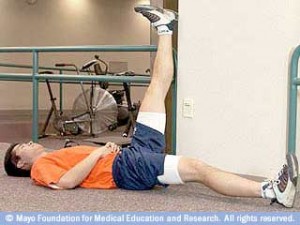
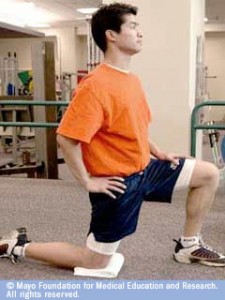
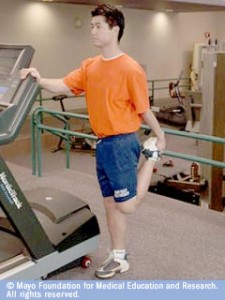

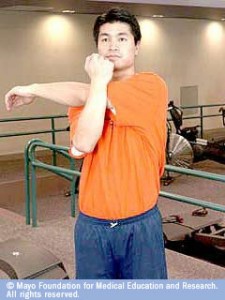
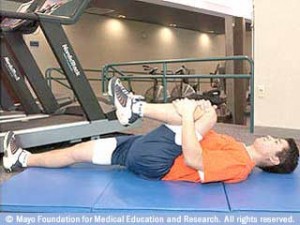
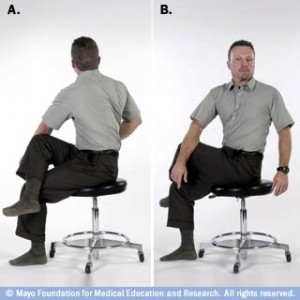

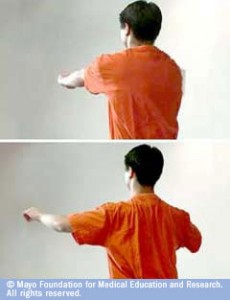















Dorse
Dec 19, 2012 at 6:40 pm
Thanks Dan,
Very timely as I was going to search out something like this. Look forward to reading your other articles (have not seen part 1 as of yet). Will check it out.
I like the fact it can be done anywhere. I travel for work a lot and spend more time in Hotel rooms than at home it seems.